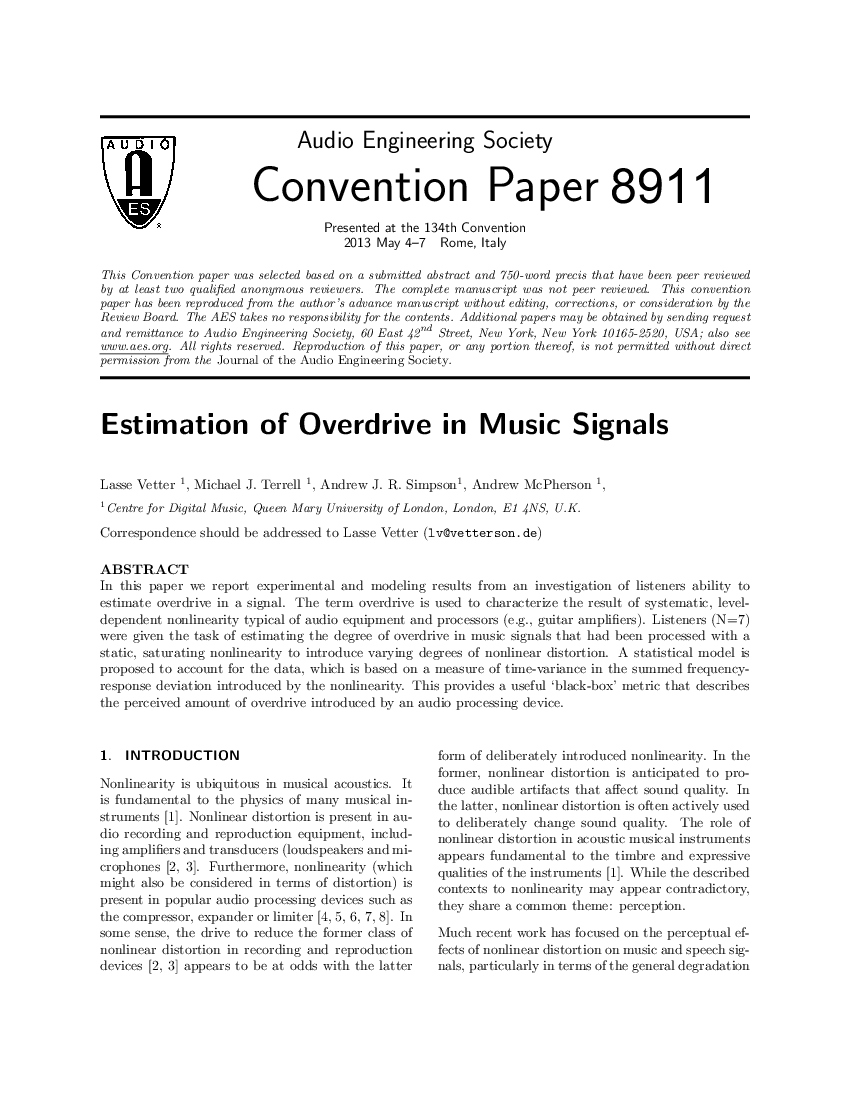Home / Publications / E-library page
You are currently logged in as an
Institutional Subscriber.
If you would like to logout,
please click on the button below.
Home / Publications / E-library page
Only AES members and Institutional Journal Subscribers can download
In this paper we report experimental and modeling results from an investigation of listeners’ ability to estimate overdrive in a signal. The term overdrive is used to characterize the result of systematic, level-dependent nonlinearity typical of audio equipment and processors (e.g., guitar amplifiers). Listeners (N=7) were given the task of estimating the degree of overdrive in music signals that had been processed with a static, saturating nonlinearity to introduce varying degrees of nonlinear distortion. A statistical model is proposed to account for the data, which is based on a measure of time-variance in the summed frequency-response deviation introduced by the nonlinearity. This provides a useful “black-box” metric that describes the perceived amount of overdrive introduced by an audio processing device.
Author (s): Vetter, Lasse; Terrell, Michael J.; Simpson, Andrew J. R.; McPherson, Andrew
Affiliation:
Queen Mary University of London, London, UK
(See document for exact affiliation information.)
AES Convention: 134
Paper Number:8911
Publication Date:
2013-05-06
Import into BibTeX
Session subject:
Measurements and Modeling
Permalink: https://aes2.org/publications/elibrary-page/?id=16811
(1080KB)
Click to purchase paper as a non-member or login as an AES member. If your company or school subscribes to the E-Library then switch to the institutional version. If you are not an AES member Join the AES. If you need to check your member status, login to the Member Portal.

Vetter, Lasse; Terrell, Michael J.; Simpson, Andrew J. R.; McPherson, Andrew; 2013; Estimation of Overdrive in Music Signals [PDF]; Queen Mary University of London, London, UK; Paper 8911; Available from: https://aes2.org/publications/elibrary-page/?id=16811
Vetter, Lasse; Terrell, Michael J.; Simpson, Andrew J. R.; McPherson, Andrew; Estimation of Overdrive in Music Signals [PDF]; Queen Mary University of London, London, UK; Paper 8911; 2013 Available: https://aes2.org/publications/elibrary-page/?id=16811